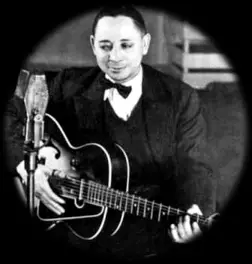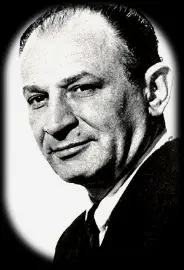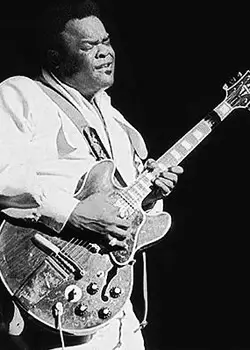CHICAGO BLUES
The Blues was born in the Delta and grew up on its journey from the country to the city, but the place it came of age was Chicago.
When Muddy Waters got off the train from Mississippi in 1942, he soon noticed two things. First, he was going to need an electric guitar turned up loud to be heard over the noisy bar crowds. Secondly he needed a band, not with horns like the ones he heard around him, but a much louder version of the string band he had back home in the Delta. His Uncle Joe (Brant) gave him an electric guitar and he set about forming the band. His half-brother Otis Spann played piano, he recruited Jimmy Rogers on guitar, then added drums and bass, and he finally picked up Little Walter with his loud amplified harp. The classic Chicago sound had arrived.
Muddy and James Cotton get their ‘Mojo Working’;

Tampa Red
Chicago had a Blues tradition from the 20’s when the post-WWI migration from the countryside to the cities brought the Blues northwards. Tampa Red and his drinking buddy Big Bill Broonzy were at the centre of the Blues scene on the South-side from the late 20s into the 40s, running an informal ‘labour exchange’ out of Red’s apartment where newly arrived players could find out about gigs. Memphis Minnie, Blind John Davis, Big Maceo and Memphis Slim were among dozens of young hopefuls who they helped. Producer Lester Melrose was responsible for most of the best Blues output over these decades, in his work with Columbia and Bluebird. As well as having a great ear for a song, he established the idea of ‘house bands’ which gave a consistent quality of sound by having the same talented players appear on each others records. Lonnie Johnson, John Lee ‘Sonny Boy’ Williamson, Washboard Sam and Bukka White were among the front-men who also played in Lester’s studio bands.

Leonard Chess
This idea was taken up by Chess Records in their ‘Golden Age’ in the 50’s, when they used Willie Dixon, Jimmy Rogers, Otis Spann James Cotton and Fred Below to develop their house style behind the stellar talents of Muddy Waters, Howlin’ Wolf, Rice ‘Sonny Boy II’ Miller, Elmore James, Little Walter, and dozens more. At the same time Vee-Jay Records were pulling the same trick for Jimmy Reed, Billy Boy Arnold and John Lee Hooker. Cobra briefly lured Willie Dixon from Chess and they released a series of tracks from Otis Rush which are some of the most chilling Blues you will ever hear.

Freddie King
Although these records were important in getting the Chicago sound out across America, and across the world, the heart of Chicago Blues was always based in the vibrant club scene. Places like The Pepper Lounge began to showcase younger talents like Junior Wells and Buddy Guy. BB King was the inspiration for dozens of bands on the West side where young players such as Luther Allison, Magic Sam and Freddie King were changing the sound of Chicago Blues.
In the mid-50’s Rock’n’Roll and R’n’B opened up crossover audiences for black music and again Chess were in the vanguard with the work of Chuck Berry and Bo Diddley. As R’n’B got a harder edge in the 60’s, with the use of horns and keyboards and shifting the sound towards Soul territory, Chicago moved with times, with funkier bass-lines and one eye on the dancefloor.
Paul Butterfield takes the Blues across the racial divide to a new generation;
The rise of multi-racial groups like the Paul Butterfield Blues Band and Charlie Musselwhite‘s Southside Band in the 60s was another sign of Chicago’s role in keeping the Blues alive and kicking. New generations of Blues players have always come to Chicago to show off their chops in front of the most discerning Blues audiences, and that is still the case.
When you hear that loud slide guitar, amplified harmonica and anguished vocals, you are hearing the classic sound of Chicago Blues.